E46 Manual Swap Kit: A Comprehensive Guide
Embarking on an E46 manual swap is a significant undertaking. This comprehensive guide provides a pathway through the crucial components of a swap kit. Selecting the right components ensures a smooth and successful transition from automatic to manual transmission‚ enhancing the driving experience.
The E46‚ a beloved BMW series‚ offers a unique blend of performance and driving pleasure. Many enthusiasts seek to enhance this experience further by converting their automatic E46s to manual transmissions. This process‚ known as a manual swap‚ involves replacing the automatic gearbox with a manual one‚ offering greater control and driver engagement.
Manual swaps have gained popularity within the E46 community due to the enhanced driving dynamics and the potential for increased performance. Several factors contribute to a successful swap‚ including selecting compatible parts‚ understanding the wiring and coding requirements‚ and performing meticulous installation. The information available online‚ from forums and videos‚ highlights the importance of preparation.
A manual swap is not a simple task‚ but with careful planning‚ the right tools‚ and a comprehensive understanding of the process‚ it can transform the driving experience of your E46. This guide aims to provide the essential information needed to navigate the complexities of an E46 manual swap.
Why Choose a Manual Swap?
The decision to undertake a manual swap on an E46 is often driven by a desire for a more engaging and connected driving experience. Automatic transmissions‚ while convenient‚ can sometimes feel disconnected from the road‚ lacking the direct control that many enthusiasts crave. A manual transmission offers a more intimate connection between the driver and the car‚ allowing for precise gear selection and greater control over engine RPMs.
Beyond the enhanced driving experience‚ manual swaps can also improve performance. With a manual gearbox‚ drivers have the ability to hold gears longer‚ downshift for optimal acceleration‚ and generally extract more performance from the engine. This level of control is particularly appealing to those who enjoy spirited driving‚ track days‚ or autocross events.
Furthermore‚ some owners simply prefer the feel and sound of a manual transmission. The tactile feedback of shifting gears‚ the sound of the engine revving‚ and the overall sense of control contribute to a more rewarding driving experience. For these reasons‚ a manual swap can be a worthwhile investment for E46 enthusiasts seeking to elevate their driving experience.
Benefits of Manual Transmission
Manual transmissions offer a unique set of advantages that appeal to driving enthusiasts. One of the primary benefits is the enhanced control they provide. Drivers have direct command over gear selection‚ allowing for precise matching of engine speed to road conditions. This control translates to improved acceleration‚ especially when downshifting for overtaking or navigating challenging terrain. Manual transmissions also allow for more effective engine braking‚ offering additional control on descents.
Another key benefit is the enhanced driver engagement. The act of shifting gears becomes an integral part of the driving experience‚ fostering a stronger connection between the driver and the vehicle. This engagement can make driving more enjoyable and rewarding‚ especially for those who appreciate the art of driving.
Furthermore‚ manual transmissions are often simpler and more reliable than their automatic counterparts. With fewer complex components‚ manual transmissions tend to require less maintenance and are less prone to failure. This can result in lower long-term ownership costs and greater peace of mind. For many‚ the benefits of control‚ engagement‚ and reliability make manual transmissions a compelling choice.
Performance Enhancement
A manual transmission swap can significantly enhance your E46’s performance. One of the most notable improvements is quicker acceleration. By eliminating the torque converter found in automatic transmissions‚ a manual swap allows for more direct power transfer from the engine to the wheels. This results in snappier throttle response and faster acceleration times‚ particularly in lower gears. The ability to precisely select the optimal gear for any given situation further enhances acceleration performance.
Another aspect of performance enhancement is improved engine braking. Manual transmissions allow drivers to downshift and utilize the engine’s resistance to slow the vehicle. This can be particularly useful in situations requiring precise speed control‚ such as navigating corners or descending steep hills. Engine braking not only enhances control but also reduces wear on the vehicle’s braking system.
Moreover‚ manual transmissions can lead to a slight increase in fuel efficiency. By allowing drivers to optimize gear selection for various driving conditions‚ manual transmissions can help to keep the engine operating within its most efficient range. This can result in improved fuel economy‚ especially during highway driving. The combined benefits of quicker acceleration‚ improved engine braking‚ and increased fuel efficiency make a manual swap a worthwhile performance upgrade.
Increased Driver Engagement
Swapping to a manual transmission in your E46 dramatically increases driver engagement. Unlike the often-passive experience of driving an automatic‚ a manual transmission puts you firmly in control of the vehicle’s dynamics. You become an active participant in the driving process‚ constantly making decisions about gear selection and clutch engagement. This heightened level of interaction creates a more connected and rewarding driving experience.
The tactile feedback of shifting gears‚ the precise coordination of clutch and throttle‚ and the direct connection to the engine’s power delivery all contribute to a more immersive driving experience. You feel more attuned to the car’s behavior and have a greater sense of control over its performance. This increased engagement can transform mundane commutes into enjoyable journeys.
Furthermore‚ a manual transmission allows for a greater degree of personalization in your driving style. You can tailor your gear selection to suit your preferences‚ whether you prioritize fuel efficiency‚ acceleration‚ or smooth cruising. This level of customization enhances the sense of ownership and control over your vehicle‚ making each drive a unique and engaging experience.
The E46 Manual Swap Kit: Essential Components
A comprehensive E46 manual swap kit is crucial for a successful conversion. The core component is‚ of course‚ the transmission itself‚ with options like the ZF or Getrag units being popular choices. A compatible clutch kit is essential‚ ensuring proper engagement and power transfer. The flywheel‚ matched to the engine and transmission‚ plays a vital role in smooth operation. The shifter assembly‚ including the linkage‚ provides the mechanical interface for gear selection.
Driveshaft compatibility is paramount‚ ensuring correct length and fitment to the differential. The pedal box‚ specifically designed for a manual transmission‚ houses the clutch and brake pedals. Brake and clutch master cylinders are necessary for hydraulic actuation of the clutch system. The wiring harness requires adaptations to integrate the manual transmission’s electronics with the car’s existing systems. Finally‚ coding and programming are essential to disable automatic transmission features and enable manual transmission functions within the ECU.
Each of these components plays a critical role in the overall success of the manual swap‚ and careful selection is vital.
Transmission Options (ZF‚ Getrag)
When embarking on an E46 manual swap‚ selecting the appropriate transmission is paramount. Two primary options dominate the market: ZF and Getrag. ZF transmissions‚ known for their robust construction and smooth shifting‚ are a popular choice for many E46 enthusiasts. Specifically‚ the ZF S5D 320Z is a frequently used model. These transmissions often offer a good balance of performance and reliability‚ making them suitable for both daily driving and spirited performance.
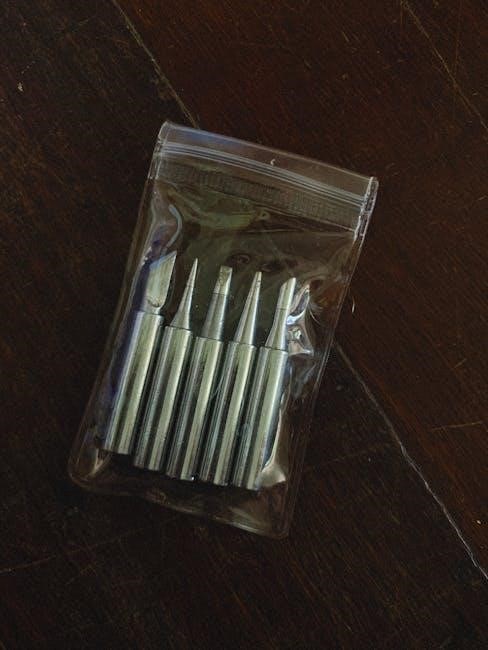
Getrag transmissions‚ while also durable‚ may offer a slightly different feel compared to ZF units. Some enthusiasts prefer the Getrag for its potentially more direct or mechanical shift feel. However‚ availability and specific model compatibility should be carefully considered. Factors such as gear ratios‚ overall condition‚ and ease of sourcing replacement parts should influence the final decision. Researching the specific characteristics of each transmission type and matching it to the intended use of the E46 is crucial for a successful swap.
Both ZF and Getrag offer viable solutions‚ but understanding their nuances is key.
Clutch Kit Selection
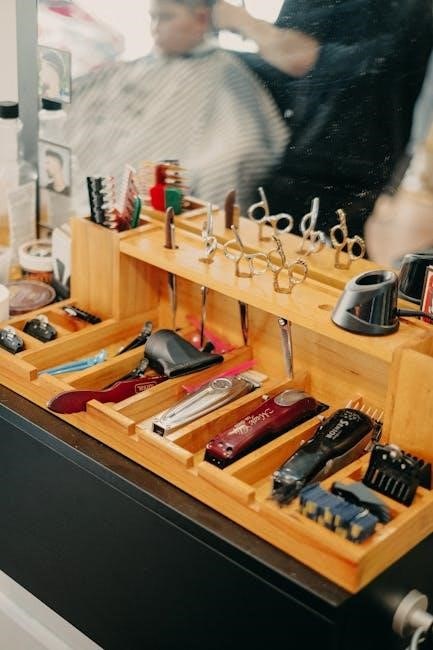
Selecting the appropriate clutch kit is a critical step in the E46 manual swap process‚ directly impacting the vehicle’s performance and driving experience. The clutch kit’s primary function is to transfer power from the engine to the transmission‚ enabling smooth gear changes and efficient power delivery. Several factors should be considered when choosing a clutch kit‚ including the vehicle’s intended use‚ power output‚ and desired pedal feel.
For daily driven E46s‚ a stock or slightly upgraded clutch kit is often sufficient. These kits typically provide a comfortable pedal feel and adequate performance for everyday driving. However‚ for E46s with increased power output or those used for performance driving‚ a more robust clutch kit is necessary to handle the added torque. Upgraded clutch kits often feature stronger pressure plates and more durable friction materials‚ ensuring reliable performance under demanding conditions.
Careful consideration of these factors will ensure optimal clutch performance and longevity after the manual swap.
Flywheel Considerations
The flywheel plays a vital role in the E46 manual swap‚ connecting the engine to the transmission and influencing overall performance. When selecting a flywheel‚ consider factors like weight‚ material‚ and compatibility with your chosen clutch kit. A lighter flywheel can improve engine responsiveness and acceleration‚ allowing the engine to rev more freely. However‚ it may also result in a less smooth idle and increased drivetrain noise.
Steel flywheels are a popular choice for their durability and ability to withstand high-performance applications. Aluminum flywheels offer weight savings but may not be as durable in the long run. It’s crucial to ensure that the flywheel is balanced to prevent vibrations and potential damage to the engine and transmission. Additionally‚ the flywheel must be compatible with the selected clutch kit to ensure proper engagement and performance.
Proper flywheel selection is crucial for a successful manual swap.
Shifter Assembly and Linkage
The shifter assembly and linkage are crucial components in the manual swap‚ directly impacting the feel and precision of gear changes. A well-chosen shifter assembly can dramatically improve the driving experience‚ providing shorter throws and a more positive engagement. Several options are available‚ ranging from stock replacements to short-shifter kits designed for performance driving.
When selecting a shifter assembly‚ consider the desired throw length and the overall feel. Short-shifter kits reduce the distance the shifter needs to travel between gears‚ resulting in quicker shifts. However‚ they may also require more effort to engage each gear. The linkage connects the shifter assembly to the transmission‚ and worn or damaged linkages can lead to sloppy and imprecise shifting.
Replacing the linkage with new or upgraded components can significantly improve the overall feel of the manual transmission. Ensure that all components are properly aligned and adjusted for optimal performance. The shifter assembly and linkage are essential for a satisfying driving experience.
Driveshaft Compatibility
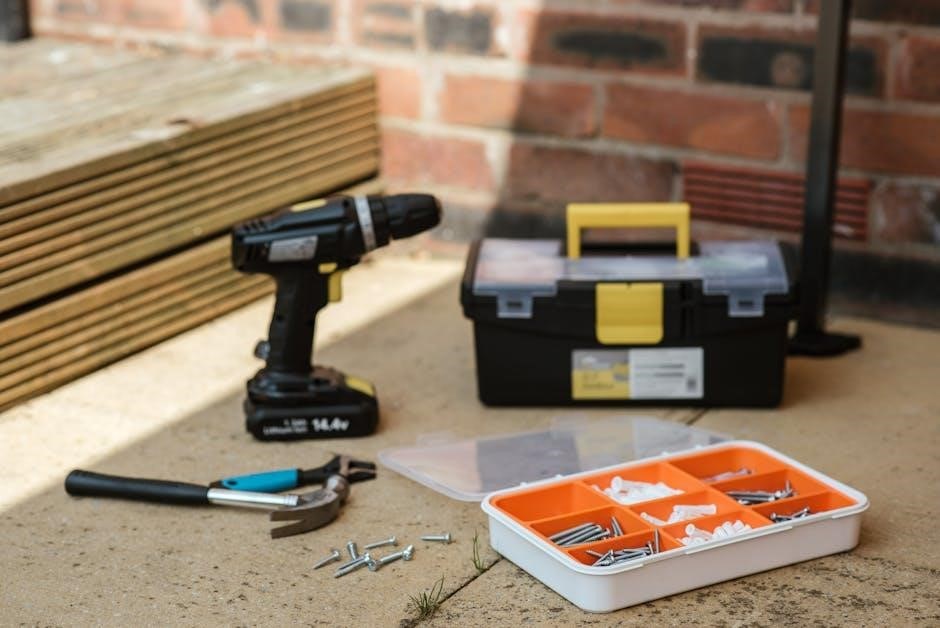
Driveshaft compatibility is a critical aspect of the E46 manual swap. The driveshaft connects the transmission to the differential‚ transmitting power to the wheels. When converting from an automatic to a manual transmission‚ the length and fitment of the driveshaft must be correct to ensure proper operation and prevent damage.
Automatic and manual transmissions often have different lengths and output flange designs‚ requiring a specific driveshaft for the manual swap. Using the wrong driveshaft can lead to vibrations‚ driveline issues‚ and potential damage to the transmission or differential. Several options are available‚ including using a driveshaft from a factory-equipped manual E46 or having a custom driveshaft made to the correct specifications.
When selecting a driveshaft‚ consider the length‚ flange type‚ and overall condition. A used driveshaft from a manual E46 can be a cost-effective option‚ but ensure it is in good condition with no signs of wear or damage. A custom driveshaft allows for precise fitment and can be tailored to specific needs‚ especially if other modifications have been made to the car. Ensuring proper driveshaft compatibility is essential for a successful manual swap.

Pedal Box Installation
The pedal box installation is a crucial step in the E46 manual swap‚ as it involves replacing the automatic transmission’s brake pedal with a manual transmission’s clutch and brake pedal assembly. This replacement is necessary to accommodate the clutch pedal required for operating a manual gearbox.
The process involves removing the existing automatic pedal box‚ which typically only includes a brake pedal‚ and installing a new pedal box that houses both the brake and clutch pedals. This often requires disconnecting the brake booster and master cylinder to gain access to the pedal box mounting points. The new pedal box must be securely mounted to ensure proper pedal function and driver safety.
Proper alignment and secure attachment of the pedal box are essential. After installation‚ check the pedal travel and ensure that the clutch pedal engages and disengages smoothly. Any misalignment or loose connections can lead to difficulty shifting or even damage to the clutch system. Careful attention to detail during pedal box installation is crucial for a successful and safe manual transmission conversion.
Brake and Clutch Master Cylinders
The brake and clutch master cylinders are integral components in the E46 manual swap‚ responsible for transmitting hydraulic pressure to the braking and clutch systems. The brake master cylinder‚ typically retained from the original automatic setup unless damaged‚ provides hydraulic force to the brake calipers when the brake pedal is pressed.
The clutch master cylinder‚ however‚ is a new addition required for the manual transmission. It generates hydraulic pressure when the clutch pedal is depressed‚ actuating the clutch slave cylinder and disengaging the clutch. Selecting a compatible and high-quality clutch master cylinder is crucial for smooth and reliable clutch operation.
Installation involves connecting the clutch master cylinder to the clutch pedal and running a hydraulic line to the clutch slave cylinder on the transmission. Bleeding the clutch system to remove air bubbles is essential to ensure proper clutch engagement and disengagement. Any leaks or air in the system can lead to poor clutch performance and potential damage. Therefore‚ careful installation and bleeding are necessary for a functional and safe manual transmission conversion.
Wiring Harness Adaptations
Wiring harness adaptations are a critical step in the E46 manual swap process. This involves modifying the existing wiring harness to accommodate the manual transmission and eliminate automatic transmission-specific functions. The primary goal is to ensure the car recognizes the manual transmission and operates correctly.
One key adaptation is bypassing the automatic transmission control module (TCM) or making it think the car is always in park/neutral to start the engine. This often involves splicing wires to mimic the signals the TCM would normally send. Additionally‚ reverse light wiring needs to be connected to the manual transmission switch‚ ensuring the reverse lights function when the car is in reverse.
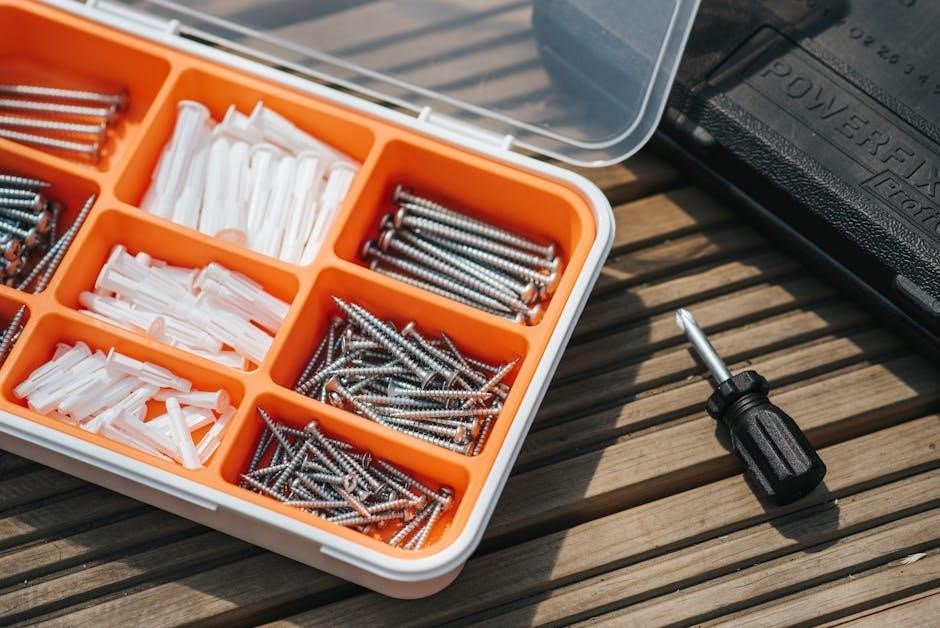
Cruise control functionality may also require wiring adjustments. Some harnesses might need to be re-pinned or have wires added to integrate with the manual transmission setup. Proper wiring diagrams and a multimeter are essential tools for this process. Incorrect wiring can lead to electrical issues‚ so meticulous attention to detail and thorough testing are crucial for a successful swap.
Coding and Programming
Coding and programming are indispensable steps in completing an E46 manual swap. This process involves modifying the car’s software to recognize and properly function with the newly installed manual transmission. Without proper coding‚ the car may exhibit various issues‚ such as error messages‚ limp mode‚ or non-functional features.
The primary goal of coding is to remove the automatic transmission settings from the car’s computer and enable the manual transmission settings. This typically involves using coding software like NCS Expert‚ Tool32‚ or ISTA/P to modify the vehicle order (VO) and individual control module parameters. Modules like the engine control unit (ECU)‚ instrument cluster‚ and ABS/DSC system may require adjustments.
Coding ensures that the car correctly interprets signals from the manual transmission‚ allowing for proper engine management‚ throttle response‚ and other crucial functions. It also disables automatic transmission-specific features‚ such as gear indicators and shift programs. Furthermore‚ coding can help prevent error codes related to the missing automatic transmission‚ ensuring a seamless and fully functional manual swap.
Coding for Manual Transmission
Successfully coding your E46 for a manual transmission after a swap involves several key steps. The first crucial task is modifying the vehicle order (VO) in the car’s computer. This is typically done using NCS Expert‚ where you remove the automatic transmission code ($205) and add the manual transmission code ($240). This change informs the car’s various modules that a manual transmission is now present.
Next‚ you need to code each module that relies on transmission data. This includes the engine control unit (ECU)‚ instrument cluster‚ and potentially the ABS/DSC system. Using NCS Expert‚ you’ll write the modified VO to these modules. This process updates their configuration to reflect the manual transmission setup. It’s important to follow the correct coding procedures and have a stable power supply to avoid errors during the coding process.
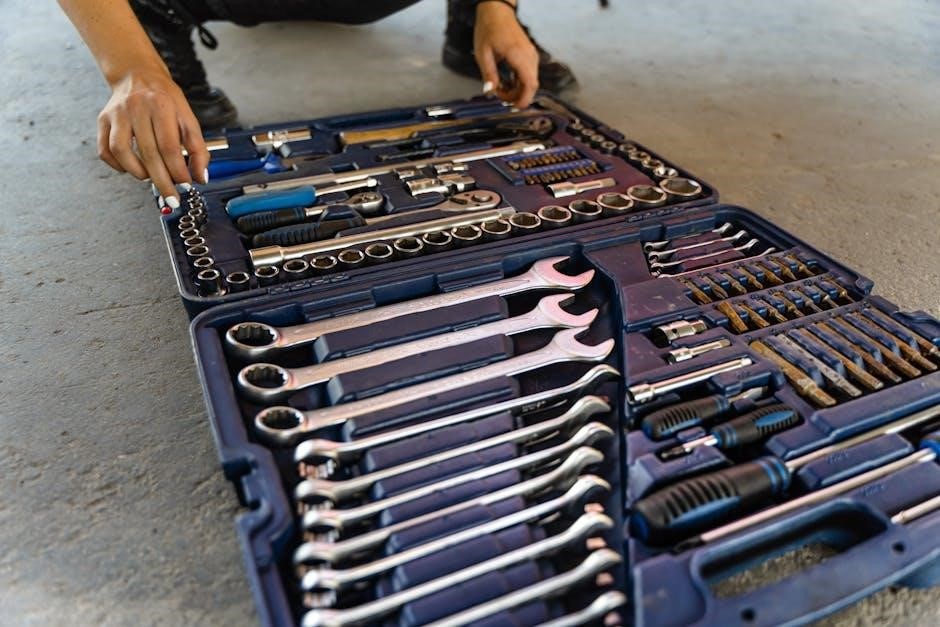
Proper coding ensures that the car’s systems function correctly with the manual transmission‚ preventing error messages and enabling features like cruise control. Careful attention to detail during coding is essential for a seamless and reliable manual swap.
Disabling Automatic Transmission Features

After completing an E46 manual swap‚ disabling residual automatic transmission features is crucial for optimal performance and to eliminate error codes. The primary focus is on removing any programming related to the automatic transmission control module (TCU). This module‚ no longer needed‚ can cause issues if left active.
One common method involves using coding software like NCS Expert to remove the automatic transmission option from the vehicle’s FA (factory order) list. This step ensures that the car’s computer no longer expects an automatic transmission to be present. Subsequently‚ you’ll need to recode the relevant modules‚ such as the DME (engine control unit) and instrument cluster‚ to reflect this change. This process effectively tells these systems to ignore any signals or data related to the missing automatic transmission.
Additionally‚ physical removal of any unnecessary wiring associated with the automatic transmission can further streamline the system. Properly disabling these features prevents diagnostic errors‚ improves overall system efficiency‚ and ensures a clean‚ manual-specific setup.
DIY vs. Professional Installation
Deciding between a DIY or professional installation for your E46 manual swap hinges on your mechanical aptitude‚ available time‚ and budget. A DIY approach offers cost savings and a deeper understanding of your vehicle. However‚ it demands significant technical skills‚ access to specialized tools‚ and a dedicated workspace. Tasks like transmission removal‚ wiring modifications‚ and coding require precision and patience.
Professional installation‚ while more expensive‚ provides expertise and assurance. Experienced mechanics can complete the swap efficiently‚ addressing potential issues proactively. They possess the necessary tools‚ diagnostic equipment‚ and coding knowledge to ensure a seamless transition. Furthermore‚ a professional installation often comes with a warranty‚ offering peace of mind.
Consider your comfort level with complex automotive work. If you’re confident in your abilities and enjoy hands-on projects‚ DIY can be rewarding. However‚ if you lack experience or prefer a hassle-free solution‚ professional installation is the wiser choice. Weigh the pros and cons carefully‚ prioritizing safety and reliability above all else.
Tips and Tricks for a Successful Swap
A successful E46 manual swap hinges on meticulous planning and attention to detail. Begin by thoroughly researching compatible parts‚ considering factors like transmission type (ZF or Getrag) and differential ratios. Source quality components from reputable suppliers‚ ensuring they meet OEM specifications.
Before starting‚ gather all necessary tools‚ including a transmission jack‚ torque wrench‚ and coding equipment. Organize parts meticulously‚ labeling everything clearly to avoid confusion during reassembly. Take detailed photos of wiring connections and component locations before disassembly‚ serving as a valuable reference.
Pay close attention to wiring harness adaptations. Properly connect and secure all wires‚ using appropriate connectors and heat shrink tubing to prevent shorts or corrosion. Coding is crucial for disabling automatic transmission features and enabling manual transmission functions. Utilize reliable coding software and follow established procedures carefully.
Test all systems thoroughly after the swap‚ including clutch engagement‚ shifting‚ and cruise control functionality. Address any issues promptly to ensure optimal performance and longevity. By following these tips‚ you can significantly increase your chances of a smooth and rewarding E46 manual swap.
Troubleshooting Common Issues
Even with meticulous planning‚ E46 manual swaps can present unforeseen challenges. One common issue is difficulty shifting‚ often stemming from improper clutch adjustment or worn shifter linkage components. Inspect the clutch master and slave cylinders for leaks‚ ensuring proper hydraulic pressure.
Another frequent problem involves electrical glitches‚ such as malfunctioning gauges or error codes related to the automatic transmission. Double-check all wiring connections‚ paying particular attention to ground points and coding parameters. Ensure the DME is properly coded to reflect the manual transmission configuration‚ disabling any residual automatic transmission functions.
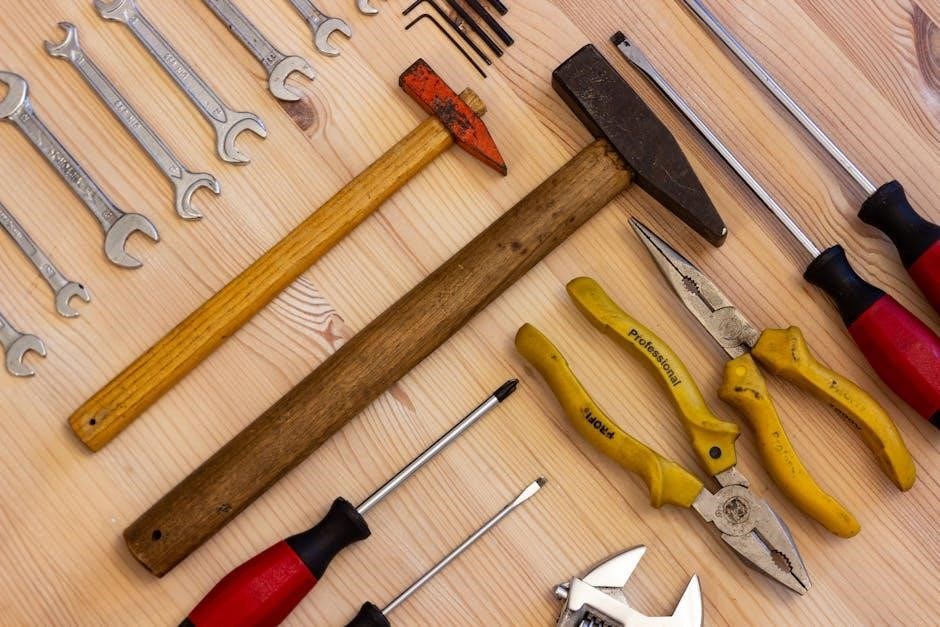
Driveshaft vibrations can occur if the driveshaft is not properly aligned or balanced. Verify the driveshaft is compatible with the transmission and differential‚ and ensure the center support bearing is in good condition. Noise from the transmission may indicate insufficient lubrication or worn bearings.
Consult online forums and resources for troubleshooting tips specific to your E46 model and swap configuration. Using a diagnostic scanner to read error codes can provide valuable insights into underlying problems. By systematically addressing these common issues‚ you can resolve most challenges encountered during an E46 manual swap.
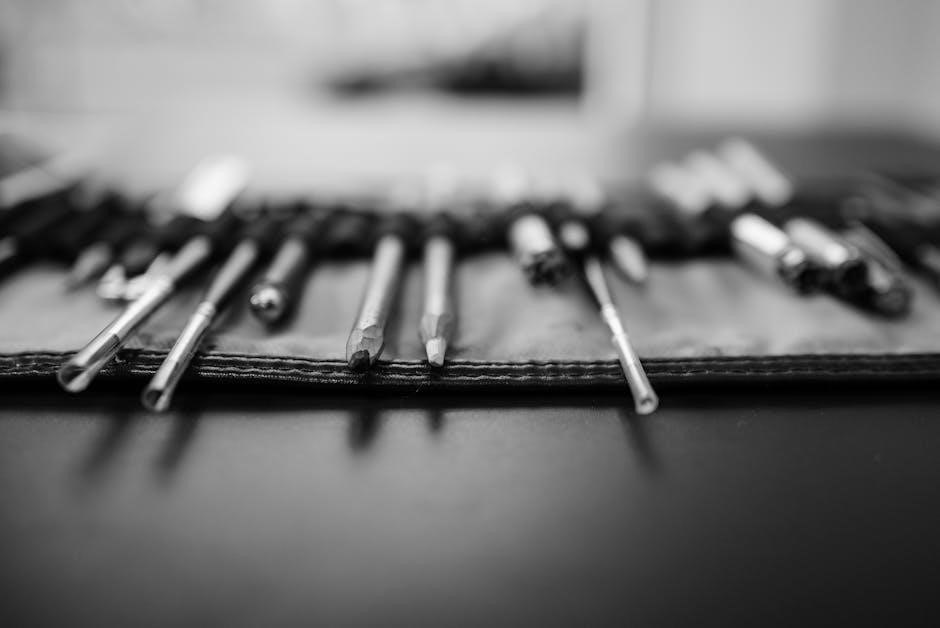
Post-Swap Maintenance and Care
After completing your E46 manual swap‚ consistent maintenance is crucial for longevity and optimal performance. Regularly inspect the transmission for leaks‚ paying close attention to the output shaft seal and shifter shaft seal. Change the transmission fluid according to the manufacturer’s recommendations‚ typically every 30‚000 to 60‚000 miles‚ using a fluid compatible with your transmission model.
Periodically check the clutch operation‚ ensuring smooth engagement and disengagement. Inspect the clutch master and slave cylinders for leaks or damage‚ and replace them if necessary. Lubricate the shifter linkage to maintain smooth and precise shifting.
Monitor the driveshaft for vibrations or noises‚ and inspect the center support bearing and universal joints for wear. Grease the driveshaft slip joint to prevent binding. Examine the differential mounting bushings for cracks or deterioration‚ as worn bushings can cause excessive movement and noise.
Address any unusual noises or vibrations promptly‚ as they may indicate underlying problems that could lead to more significant damage. By adhering to a diligent maintenance schedule‚ you can ensure your E46 manual swap provides years of enjoyable driving;
